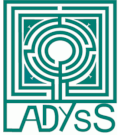Home > Programmes > Taeniases/Cysticercoses in Asia > Bali, Indonesia

Bali, Indonesia
Spatial distribution of Taenia solium and Cysticercosis in Bali. 27 february 2013
 This programme is led and supported by the Asahikawa Medical University and the Japanese Society for the Promotion of Science. It includes Japanese (Pr. Akira Ito, Pr. Munehiro Okamoto, Dr. Yasuhito Sako, Dr Tetsuya Yanagida, etc.), Indonesian (Dr Kadek Svastika, Dr Nyoman Sadra Dharmawan, Dr Tony Wandra, etc.) and French (Pr. Patrick Giraudoux) colleagues. The objective is to provide research based evidence towards cysticercosis control, based on joining molecular, immunological and spatial ecology methods. The areas studied in east Bali are in Gianyar and in Karangasem, for the latter at the foot of Mount Agung, an active strato-volcano whose last devastating eruption was in 1963-64. There, houses are scattered in discrete agriculture villages active mostly during the rainy season. During the dry season, workers emigrate to touristic areas of Bali to find jobs.
This programme is led and supported by the Asahikawa Medical University and the Japanese Society for the Promotion of Science. It includes Japanese (Pr. Akira Ito, Pr. Munehiro Okamoto, Dr. Yasuhito Sako, Dr Tetsuya Yanagida, etc.), Indonesian (Dr Kadek Svastika, Dr Nyoman Sadra Dharmawan, Dr Tony Wandra, etc.) and French (Pr. Patrick Giraudoux) colleagues. The objective is to provide research based evidence towards cysticercosis control, based on joining molecular, immunological and spatial ecology methods. The areas studied in east Bali are in Gianyar and in Karangasem, for the latter at the foot of Mount Agung, an active strato-volcano whose last devastating eruption was in 1963-64. There, houses are scattered in discrete agriculture villages active mostly during the rainy season. During the dry season, workers emigrate to touristic areas of Bali to find jobs.
A field survey has been carried out in 2013, January 20-26, during the rainy season, in order to screen and localise Taenia solium/cysticercosis human carriers and cysticercosis pigs and to harmonize multi-disciplinary data collection and inter-operability in a context spatially explicit. This study will be pursued in early September.




Contact: Akira Ito
Department of Parasitology
Asahikawa Medical University, Japan










